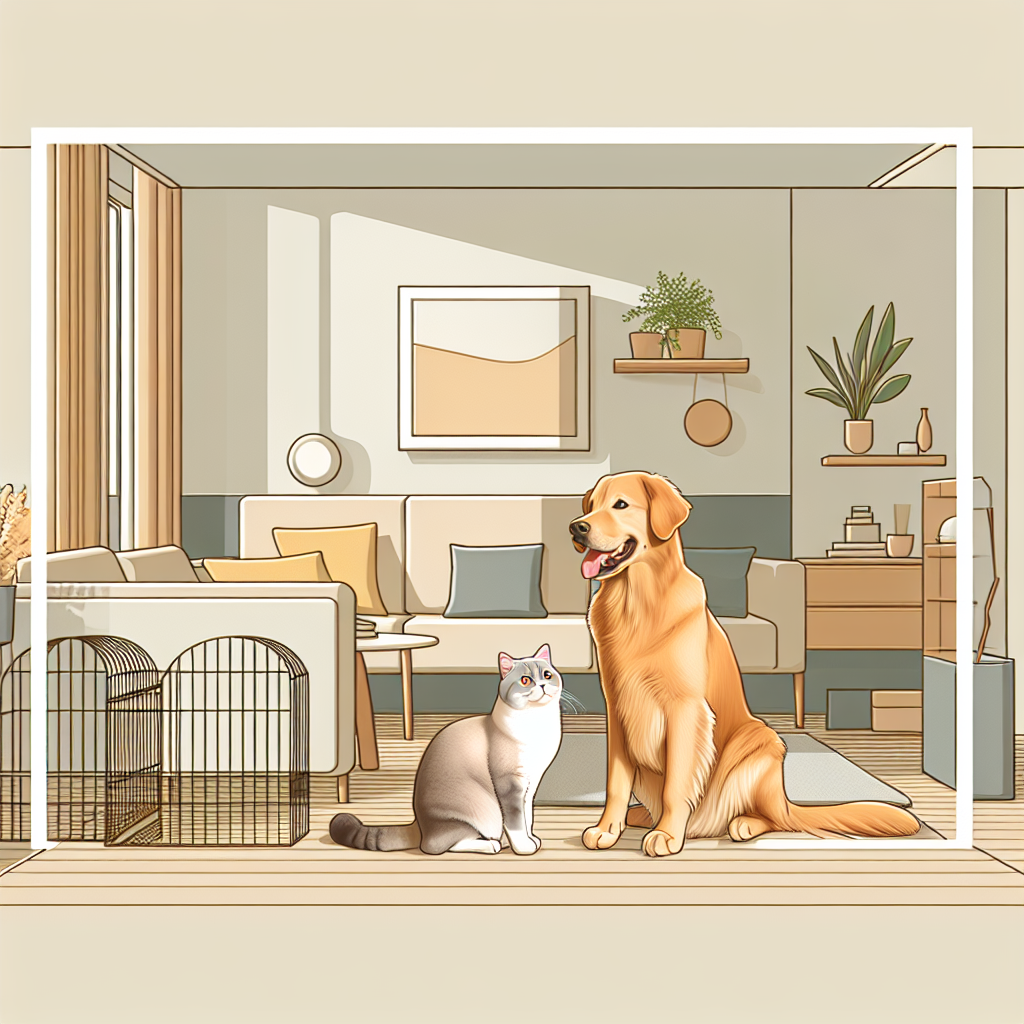
“`html
Guide to Introducing Cats and Dogs Successfully
Introducing a new pet into your home can be an exciting but challenging experience, especially when it involves introducing a cat and a dog to each other. Cats and dogs have different social structures, communication styles, and instincts, which can lead to misunderstandings and conflicts. However, with the right approach, you can foster a harmonious relationship between them. This comprehensive guide will walk you through the process of introducing cats and dogs successfully, ensuring both animals feel safe and comfortable in their shared environment.
Understanding the Nature of Cats and Dogs
Before you begin the introduction process, it’s essential to understand the fundamental differences between cats and dogs. This knowledge will help you anticipate potential challenges and address them effectively.
Cats: Independent and Territorial
Cats are generally solitary animals by nature. They are territorial and often form strong attachments to their environment. Changes in their surroundings or routine can be stressful for them. Cats communicate through body language and scent, and they appreciate having control over their space.
Dogs: Social and Pack-Oriented
Dogs, on the other hand, are pack animals. They are social creatures that thrive on companionship and hierarchy. Dogs communicate through vocalizations, body language, and scent. They are usually more adaptable to changes in their environment compared to cats but may become overly excited or curious when exposed to new experiences.
Preparing for the Introduction
Proper preparation is key to a successful introduction. Here are some steps to take before bringing a cat and a dog together:
1. Assess Temperament and Behavior
Evaluate the temperament and behavior of both the cat and the dog. Consider factors such as age, energy levels, past experiences with other animals, and overall personality. A calm and patient dog is more likely to do well with a cat than a hyperactive or aggressive one. Similarly, a confident and social cat will handle the introduction better than a timid or aggressive one.
2. Create Safe Spaces
Ensure that each animal has its own safe space where it can retreat and feel secure. For the cat, this could be a separate room with a litter box, food, water, and toys. For the dog, designate a space where it can relax without intruding on the cat’s territory. Providing vertical space for the cat, such as shelves or a cat tree, allows the cat to observe the dog from a safe distance.
3. Separate Scent Exchange
Before the first face-to-face meeting, familiarize both animals with each other’s scent. Swap bedding or use a soft cloth to gently rub one animal’s scent onto the other. This helps them become accustomed to each other’s presence without direct interaction.
The Introduction Process
Once you’ve prepared both animals and their environment, it’s time to start the introduction process. This should be done gradually and with patience.
1. Initial Visual Introduction
The first step is to allow the animals to see each other from a distance. Use a baby gate or a screen door to separate them while allowing visual contact. Observe their reactions closely. Positive signs include curiosity, relaxed body language, and wagging tails (in dogs). Negative signs include hissing, growling, or raised fur (in cats), and barking, lunging, or stiff body posture (in dogs).
2. Controlled Face-to-Face Meeting
If the initial visual introduction went well, you can proceed to a controlled face-to-face meeting. Keep the dog on a leash and allow the cat to approach at its own pace. Reward both animals with treats and praise for calm behavior. Keep the sessions short and gradually increase their duration as they become more comfortable.
3. Monitor Body Language
During the introduction, pay close attention to the body language of both animals. Look for signs of stress or aggression, such as pinned-back ears, a flicking tail, or avoidance behavior. If either animal shows signs of distress, separate them and try again later.
Building a Positive Relationship
Once the initial introduction is successful, you can focus on building a positive relationship between your cat and dog. This involves ongoing training, supervision, and reinforcement of good behavior.
1. Positive Reinforcement
Use positive reinforcement techniques to encourage desired behaviors. Reward both animals with treats, praise, or playtime when they interact calmly or ignore each other peacefully. Consistent positive reinforcement helps them associate each other’s presence with positive experiences.
2. Supervised Interactions
Continue to supervise interactions between the cat and dog, especially during the early stages of their relationship. Intervene if necessary to prevent any aggressive or overly boisterous behavior. Gradually allow them more freedom as they become more comfortable with each other.
3. Respecting Boundaries
Teach the dog to respect the cat’s boundaries. Train the dog to understand commands like “leave it” or “stay” to prevent it from chasing or harassing the cat. Similarly, provide the cat with escape routes and places to hide if it feels threatened.
Potential Challenges and Solutions
Despite your best efforts, challenges may arise during the introduction process. Here are some common issues and how to address them:
1. Aggression
If either the cat or dog displays aggression, separate them immediately and re-evaluate the situation. Consult a professional animal behaviorist if necessary. Sometimes, aggression may stem from fear, so gradual desensitization and counter-conditioning may be required.
2. Fear and Anxiety
Fear and anxiety can delay the introduction process. Provide each animal with plenty of space and time to adjust. Use calming aids like pheromone diffusers or anxiety wraps if needed. Gradual exposure and positive reinforcement can help reduce anxiety over time.
3. Territorial Disputes
Territorial disputes can occur if the cat feels its space is invaded. Ensure the cat has plenty of vertical space and private areas where it can retreat. Gradually expand the shared spaces as both animals become more comfortable.
Conclusion
Introducing a cat and a dog successfully requires patience, preparation, and understanding. By considering the unique needs and behaviors of both animals, creating a safe environment, and using positive reinforcement, you can foster a harmonious relationship between them. Remember that every pet is unique, and the introduction process may vary in length depending on their personalities and past experiences. With time and effort, your cat and dog can become the best of friends, enriching your home with their companionship and love.
“`
#ChatGPT assisted in the creation of this article.








